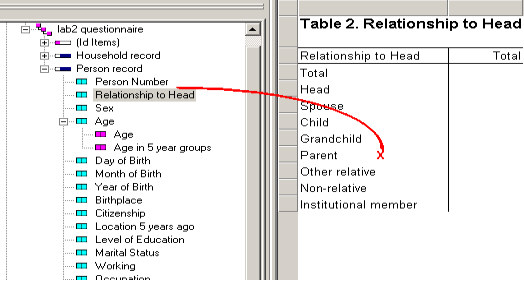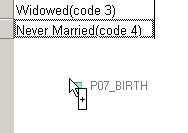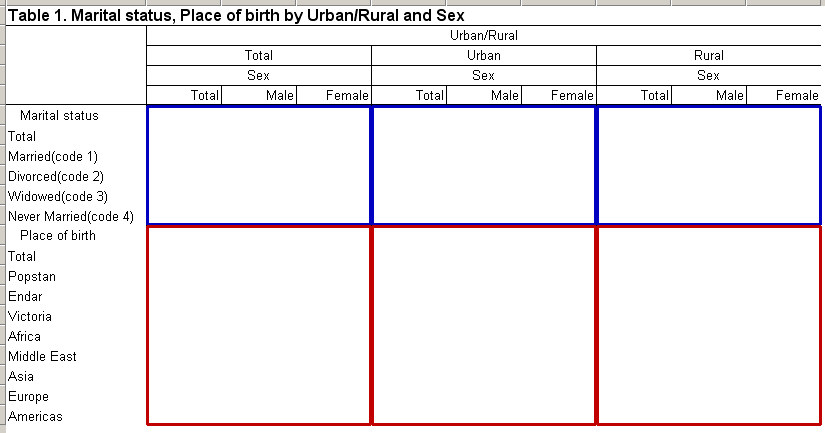- <GetStart>
- CSPro User's Guide
- The CSPro System
- Data Dictionary Module
- The CSPro Language
- Data Entry Module
- Batch Editing Applications
- Tabulation Applications
- Introduction to Tabulation
- Parts of a Table
- Parts of the Table Tree
- Common Uses of Tabulation
- Capabilities of Tabulation
- Creating Tables
- Create a New Tabulation Application
- Create a Table
- Create Tables with Multiple Variables
- Implications of Data Dictionary Value Sets
- Tabulate Items with Multiple Occurrences
- Tally Attributes for a Variable
- Tally Attributes for a Table
- Add, Insert, and Delete Tables
- Move Between Tables
- Run a Tabulation Application
- Renaming Tables and Table Applications
- How To ...
- Add a Variable to a Tabulation
- Remove a Variable from a Tabulation
- Define a Universe for a Table
- Add Weights to a Table
- Tabulate Values Instead of Frequencies
- Include/Exclude Special Values in a Variable
- Hide or Change the Position of the Total
- Add Percents to a Table
- Add Summary Statistics to a Table
- Include/Exclude Tables from Run
- Debug Table Totals
- Formatting Tables
- Creating Tables by Geographic Area
- Printing Tables
- Tabulation Preferences
- Saving and Copying Table Data
- Table Post Calculation
- Run Production Tabulations
- Advanced Table Topics
- Table Tips and Tricks
- Data Sources
- CSPro Statements and Functions
- Templated Reporting System
- HTML and JavaScript Integration
- Action Invoker
- Appendix
- <CSEntry>
- <CSBatch>
- <CSTab>
- <DataViewer>
- <TextView>
- <TblView>
- <CSFreq>
- <CSDeploy>
- <CSPack>
- <CSDiff>
- <CSConcat>
- <Excel2CSPro>
- <CSExport>
- <CSIndex>
- <CSReFmt>
- <CSSort>
- <ParadataConcat>
- <ParadataViewer>
- <CSCode>
- <CSDocument>
- <CSView>
- <CSWeb>
Add a Variable to a Tabulation
A table (or subtable) is created by selecting an item OR value set [if multiple value sets are available] from the data dictionary and then drag and dropping it into the table window on the right. Dropped in the upper right it becomes a column and in the lower left it becomes a row.
Here is an example of dropping a row.

In order to create subgroupings of categories already defined in the table, e.g., by sex, drag and drop the subgroup item (sex) anywhere on the existing value set. (See 'Sex' in column below)

In order to create an additional set of row/column categories, drag and drop the item or value set below the existing rows [for additional set of rows] or to the right of the existing columns [for additional set of columns]. (See Place of Birth and Martial Status below)

The resulting table would be as follows:

The title of the table is generated by combining the LABELS from the dropped items/values. The word "and" indicates that the second is dependent on the first. The word "by" separates the row labels from the column labels. A comma separates the subtable items in a row or column.
In example above: "Marital Status" and "Place of Birth" are two row items (separated by a ","). These two row items are separated from the column items using the word "by". The column item, "Urban/Rural", is subdivided by "Sex" (as indicated with "and").